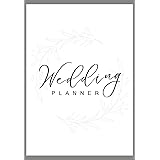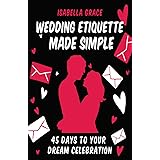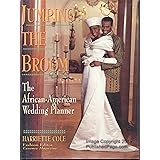Embarking on wedding planning can feel like a fairytale. Images of flowers and perfect decor fill your mind. However, the reality often holds surprises. Many couples discover hidden challenges. These aspects are rarely discussed openly. This can lead to unexpected stress and costs.
The video above sheds light on these untold truths. It prepares you for the journey. This guide expands on those crucial insights. We will dive deeper into each topic. You will gain practical strategies. Prepare for a smoother wedding day. Let’s explore the less glamorous, yet vital, parts of wedding planning.
Mastering Your Guest List and RSVPs
Managing your guest list is paramount. It impacts every budget decision. Think about food, drinks, and rentals. These are directly tied to guest numbers. Yet, many guests struggle with RSVPs. You must set a clear RSVP date. However, expect to follow up. It can be a tedious process. Anticipate needing extra time.
Imagine if your final count is due too soon. You risk overpaying for empty seats. Instead, give yourself buffer time. Allow a few weeks after your RSVP date. This flexibility is essential. It prevents last-minute vendor scrambles. It also protects your budget from unnecessary expenses.
Unexpected Guest Changes
Guests might drop out last minute. This happens more often than you think. You may have already paid for their meal. Their rentals are also accounted for. This can be annoying, of course. Yet, it is an unfortunate reality. Budget for these small losses. A couple of guests won’t derail your day. Be prepared financially for these slight adjustments.
Conversely, some guests might appear unannounced. They might RSVP “no” then show up. Or they fail to respond, then arrive. Prepare for slight fluctuations. Keep a small buffer in your seating chart. Always expect a little wiggle room. Flexibility is your best friend here.
Streamlining Wedding Communication
Your inbox will become a battlefield. Wedding vendors send countless emails. Personal and work emails get lost. This creates unnecessary confusion. Consider creating a dedicated email address. Share this with your partner. All wedding planning correspondence goes there. This keeps everything organized.
Having a central hub is invaluable. It ensures no crucial detail is missed. Both partners stay informed easily. This separate inbox prevents stress. It separates wedding planning from daily life. This simple step saves immense headaches.
Crafting Your Wedding Day Timeline
The wedding day doesn’t just happen. Every moment needs a plan. Many couples overlook this vital step. They expect everything to flow naturally. However, structure ensures a smooth event. A detailed timeline is non-negotiable.
Imagine your first dance. What if the band isn’t ready? Or toasts begin before guests are seated? A timeline prevents these mishaps. It schedules everything precisely. Include arrival times, photos, and meals. Even small transitions need attention. Work with a wedding planner or coordinator. They can build this roadmap for you. This crucial document guides every vendor. It ensures everyone is on the same page.
Navigating Wedding Invitation Postage
Postage costs can sneak up quickly. Many couples forget this expense. It is a hidden budget killer. Your beautiful invitation suite adds weight. Heavy cardstock, multiple inserts – it all adds up. Each extra ounce means more stamps.
Before ordering, get a sample. Take it to the post office. Weigh the entire invitation suite. Ensure it fits within one stamp’s limit. Needing two stamps doubles your cost. This small check saves a lot of money. Postage planning is vital for your stationery budget.
The True Time in Your Wedding Dress
Many brides think they wear their dress for a short time. They might plan a reception dress change. However, you will spend much longer in it. Expect to be in your gown for at least five or six hours. This includes pre-ceremony photos. Think first looks and bridal portraits. Family and bridal party photos also take time.
The ceremony is just the start. Post-ceremony photos follow. Dinner, toasts, and your first dance. All happen in your wedding dress. Choose a comfortable dress. Consider your shoes too. You will be on your feet for hours. Comfort truly matters on this day.
Processing Post-Wedding Emotions
The wedding day is a culmination. Months, even years, of wedding planning cease. You expect pure elation. However, a strange sadness can settle in. This is completely normal. The intense focus shifts suddenly. All the vendor communications end.
This feeling of loss is common. It marks an ending and a beginning. Your life was consumed by planning. Now, the focus shifts to marriage. Do not feel guilty for these emotions. Acknowledge them as part of the process. Discuss these feelings with your partner. Lean on each other through this transition.
Planning Your Wedding Ceremony Details
Receptions get most of the attention. Cocktail hour, dinner, and dancing dominate. Yet, the ceremony is the core event. It needs careful wedding planning too. Do not overlook this crucial segment. Plan the order of events. Decide on readings and music. Include any special performances.
If you have a professional officiant, they guide you. They know traditional ceremony structures. However, a friend or family member requires more work. Meet with them well in advance. Plan every word and action. Write your vows carefully. Ensure every detail reflects your vision. The ceremony sets the tone for your marriage.
Managing Constant Questions
From engagement to the wedding day, questions will pour in. Guests, family, and even casual acquaintances. This can become incredibly annoying. Especially on your actual wedding day. Prepare for this influx of inquiries. A wedding website is your best friend.
Direct everyone to this central resource. Include all crucial details there. This prevents repetitive conversations. On the wedding day, delegate. Appoint a point person. Your maid of honor or a trusted family member. They can field all questions. This allows you to truly relax and enjoy. Keep your phone put away. Do not engage in calls or texts. Let others manage the small details.
Embracing Imperfections: Things Will Go Wrong
No wedding day is absolutely perfect. Things will inevitably go awry. This is not a cause for stress. It’s simply a fact of large events. Prepare for minor glitches. Do not let them upset you. Most issues are barely noticeable. In fact, nine times out of ten, only you will know.
A wedding coordinator excels here. They handle problems behind the scenes. They find alternative solutions quickly. This keeps the stress off your shoulders. Trust their expertise in handling issues. Embrace the day’s flow. Focus on your partner and guests. Small imperfections often become charming anecdotes.
Ordering Your Wedding Dress Early
The wedding dress shopping experience is unique. Many assume they can buy off the rack. This is rarely the case for bridal gowns. Most dresses are made to order. This bespoke process takes time. It can take up to a year. Sometimes even longer is required.
Start shopping well in advance. This gives you ample choices. You avoid rushed decisions. You also prevent timeline stress. Order your wedding dress at least 9-12 months out. This leaves time for alterations too. Do not limit your options. Give yourself the gift of time. Your perfect dress awaits you.
Practicing Your Dress Bustle
Bustling your wedding dress is crucial. After the ceremony, you want to dance. The train needs to be secured. However, bustles can be complex. They involve hooks, loops, and buttons. Do not assume it will be easy.
During your final fitting, pay close attention. Bring your maid of honor or a trusted person. Have them watch the seamstress. Film the entire bustling process. This video is an invaluable reference. It helps on the wedding day. Practice walking in your dress too. Feel comfortable and confident. This ensures graceful movement throughout the celebration.
Crafting Your Wedding Day Vision
Not every couple has a clear vision. Endless Pinterest boards can overwhelm. Colors, styles, and decor ideas clash. This makes decisions incredibly difficult. It’s hard to find a cohesive look. Many advice pieces focus on *how* to find decor. However, finding your *style* is often overlooked.
Create a mood board to clarify. Save every inspiring image. Don’t worry about consistency initially. Then, narrow it down. Pick your top ten photos. Ensure they cover different categories. Think florals, attire, and cake. Place these images on a single page. Canva is perfect for this task. Identify recurring colors and elements. This visual tool unifies your wedding planning ideas. It brings your dream wedding day into focus.











